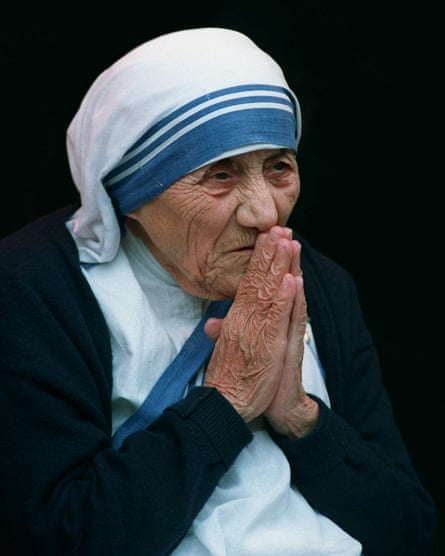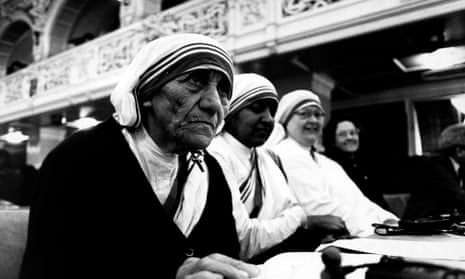I grew up in a Kolkata flat across the road from Mother Teresa’s convent. This was in the 1960s, before she was famous. I was one of many Catholic children who volunteered at Shishu Bhavan, her orphanage for abandoned children, feeding and bathing babies during the school holidays. It upset everyone greatly that the nuns were forbidden even a chilled juice on a sweltering summer’s day. Absolutely nothing happened without Mother Teresa’s permission. Young sisters walked miles in the scorching sun, often barefoot, on burning hot pavements, because Mother Teresa decreed it had to be done. A precocious 12-year-old, I hated this unfair, petty autocrat.
Indian children were taught to respect their elders and revere the religious. In my teens, however, I met Marxist teachers who forced us to think critically about society and religion. So by the time I reached university I was in iconoclastic mode. I shunned the hypocrisy of many “pillars” of the church. Mother Teresa definitely helped the poor but her sisters were allowed to write home only twice a year, their personal letters scrutinised, sometimes by Mother Teresa herself. What a control freak, I raged.
Mother Teresa didn’t deserve Christopher Hitchen’s unadulterated, poisonous vitriol. But her vintage, “There’s something beautiful in seeing the poor accept their lot, to suffer it like Christ’s Passion,” left me fuming too. How dare she trivialise poverty? But she could. She did. And the world lapped it up. She once comforted a sufferer, with the line: “You are suffering, that means Jesus is kissing you.” The infuriated man screamed, “Then tell your Jesus to stop kissing me.” As a Christian in a Hindu majority country, such Teresa-isms often left me squirming with embarrassment.
At 19, filled with youthful arrogance and self-righteous indignation, I questioned how she could ethically take money from the world’s most obnoxious dictators. Why was she silent about unjust wars and oppression?

Later, when I had children, my mother insisted we took them to the her chapel to be blessed. She did. My mother told Mother Teresa, “My daughters volunteered at Shishu Bhavan when they were young.” “Oh,” she responded to me with unconcealed hauteur. “When you were a child. But now? You do nothing useful for the poor now, I suppose?” Stung by her rudeness, I felt the old anger rising. I stayed silent, not trusting myself to reply politely. “We don’t want her blessings,” I barked at my mother. “She’s even more insufferable now.” I carried this dislike in my heart for decades.
A turning point came unexpectedly.
Ten years ago, near the Mother House, I passed a man lying inert, on the Kolkata pavement. A drunk. I thought, moving past. Yet something made me stop and retrace my steps. Is he drunk or dead, I wondered.
In the distance, I spotted two nuns in their distinctive blue and white saris. I ran towards them, “There’s a man lying on the roadside. I’m not sure if he’s dead.” They responded immediately by helping him and calling an ambulance. Yes, Kolkata still has people dying abandoned on its streets.
I was brought up to work for change, for social justice. But I cannot in conscience criticise a woman who picked people off filthy pavements to allow them to die in dignity. To my knowledge, there’s still no one else doing that.
I am not particularly enamoured of sainthood. Or of Mother Teresa personally. But seeing her through the eyes of the man on the Kolkata street makes me pause. What would happen to these people if it weren’t for the Teresas of this world reaching out to them in ways I certainly couldn’t. Surely to them Mother Teresa must be a saint? Her home for the dying was Kolkata’s first hospice.
Maybe the question our society should ask is, “Why do we still have a world where Mother Teresa is needed?” In answer to this, an Indian prayer floats through my mind. “Where the mind is without fear and the head is held high, into that heaven of freedom my father, let my country awake.” These are not Mother Teresa’s words but those of India’s most illustrious poet, Rabindranath Tagore. Saint Teresa imagined that such a world was possible.






